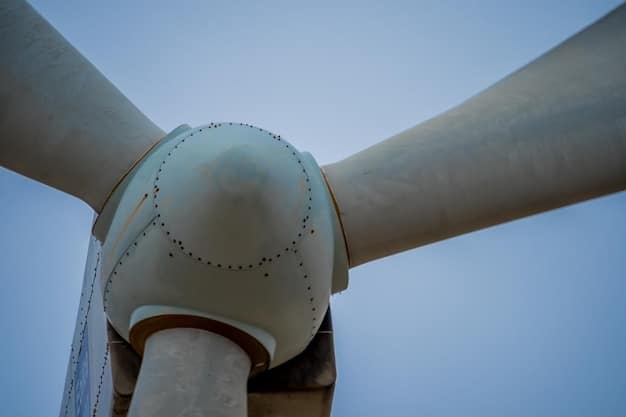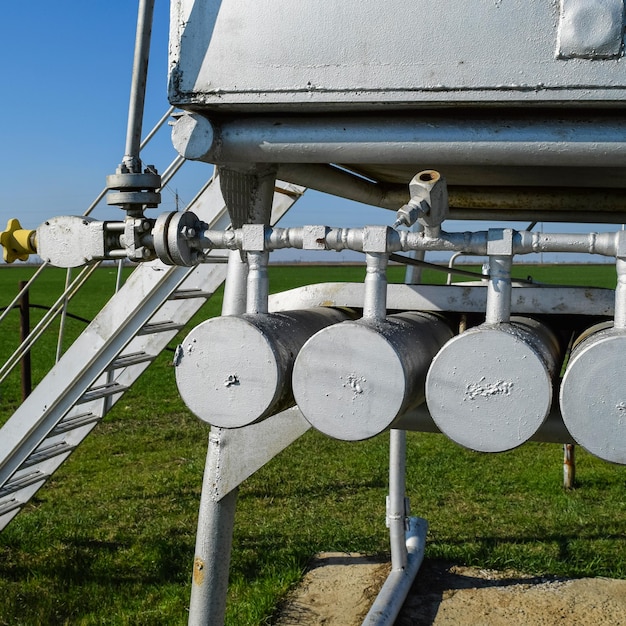Carbon Offsetting in the US: Evaluating Climate Change Projects

Carbon offsetting in the US involves projects that reduce or remove carbon dioxide from the atmosphere to compensate for emissions elsewhere, but their effectiveness varies widely depending on the project type and verification standards.
As concerns about climate change intensify, the role of carbon offsetting in the US: evaluating the effectiveness of different projects in mitigating climate change becomes increasingly important. But how effective are these projects truly, and what impact do they have on our environment?
Understanding Carbon Offsetting in the US
Carbon offsetting has emerged as a popular mechanism for individuals, businesses, and governments to mitigate their environmental impact. In the US, carbon offsetting involves investing in projects that reduce or remove greenhouse gas emissions to compensate for emissions generated elsewhere. But what lies beneath this concept, and how does it apply in practice?
These projects can range from renewable energy ventures to reforestation efforts, all aimed at balancing out the carbon footprint. However, the efficacy of carbon offsetting programs is a subject of much debate, with questions raised about their actual environmental benefits and long-term sustainability.
Types of Carbon Offset Projects
Carbon offset projects vary in strategy and focus, each with its own set of advantages and shortcomings.
- Reforestation and Afforestation: Planting new trees or restoring forests to absorb carbon dioxide from the atmosphere.
- Renewable Energy Projects: Investing in solar, wind, or hydroelectric power to reduce reliance on fossil fuels.
- Methane Capture: Capturing methane from landfills or agricultural operations to prevent its release into the atmosphere.
- Energy Efficiency Improvements: Implementing measures to reduce energy consumption in buildings and industries.
Each of these project types makes a unique contribution to mitigating climate change. Renewable energy projects, for example, directly reduce emissions by replacing fossil fuels, while reforestation projects offer long-term carbon sequestration. The choice of project depends on specific goals and priorities.

In conclusion, understanding the types of carbon offset projects is essential for evaluating their potential impact. Choosing the right project can significantly contribute to climate change mitigation efforts, but careful consideration is key.
Evaluating the Effectiveness of Reforestation Initiatives
Reforestation initiatives are often highlighted as a primary solution in carbon offsetting strategies. However, the success of such projects hinges on several factors, making it crucial to evaluate their effectiveness critically.
These initiatives aim to sequester carbon dioxide from the atmosphere by planting new trees or restoring existing forests. But how can we ensure that these projects deliver on their promises, and what challenges do they face?
Monitoring and Verification
Effective monitoring and verification are essential for ensuring the legitimacy of reforestation offsets.
- Carbon Sequestration Rates: Accurately measuring the amount of carbon absorbed by the trees over time.
- Long-term Survival: Ensuring the trees survive to maturity and continue to sequester carbon.
- Additionality: Verifying that the reforestation would not have occurred without the carbon offset funding.
Without rigorous monitoring and verification, reforestation projects may fall short of their intended goals. It is important to implement transparent and accountable systems to assess the true impact of these initiatives.
Overall, reforestation initiatives can be a valuable tool in carbon offsetting, provided they are well-managed and carefully monitored. Ensuring long-term survival and accurately measuring carbon sequestration rates are critical for their success.

The Role of Renewable Energy Projects in Offsetting Carbon
Renewable energy projects play a significant role in efforts aimed at carbon offsetting. By investing in sources such as solar, wind, and hydroelectric power, these projects reduce our dependence on carbon-intensive fossil fuels.
Their contribution lies in replacing emissions-heavy power generation with cleaner alternatives, which not only cuts carbon emissions but also promotes sustainable energy practices. But how effective are these projects in practice, and what challenges do they encounter?
Reducing Greenhouse Gas Emissions
Renewable energy projects directly reduce greenhouse gas emissions by:
- Displacing Fossil Fuel Consumption: Replacing coal, oil, and natural gas with cleaner energy sources.
- Lowering Carbon Intensity: Reducing the overall carbon footprint of energy production.
- Promoting Sustainable Development: Encouraging the growth of a green economy.
These projects not only reduce environmental impact but also contribute to energy security and economic development. By prioritizing renewables, we can create a more sustainable future.
In conclusion, renewable energy projects are a key component of carbon offsetting strategies. Their ability to reduce greenhouse gas emissions and promote sustainable development makes them an essential investment for a cleaner future.
Methane Capture: An Overlooked Offset Opportunity
Methane capture is a less frequently discussed but highly effective method for offsetting carbon emissions. Methane is a potent greenhouse gas, with a warming potential many times greater than carbon dioxide. Therefore, capturing it before release into the atmosphere can have a substantial positive impact.
These projects often involve capturing methane from sources like landfills, agricultural activities, and coal mines. By converting methane into energy or preventing its release, these initiatives not only reduce greenhouse gas emissions but can also generate economic benefits.
Challenges in Implementation
Despite its potential, methane capture faces several challenges:
- High Initial Costs: Implementing methane capture systems can be expensive.
- Technical Complexity: The technology can be complex and requires specialized expertise.
- Regulatory Hurdles: Navigating environmental regulations can be challenging.
Overcoming these challenges requires innovative solutions, supportive policies, and financial incentives. By addressing these issues, we can unlock the full potential of methane capture as an offset opportunity.
Overall, methane capture represents a significant opportunity for carbon offsetting. Addressing the challenges in implementation can unlock substantial environmental and economic benefits.
The Importance of Carbon Standards and Certifications
The integrity of carbon offsetting relies heavily on robust carbon standards and certifications. These standards ensure that offset projects are legitimate, measurable, and truly additional, meaning that the emission reductions would not have occurred without the offset funding.
Certification programs provide assurance that projects meet established criteria and deliver real environmental benefits. However, not all certifications are created equal, and it is important to understand the different standards and their implications.
Popular Certification Standards
Several certification standards are widely used in the carbon offset market:
- Verified Carbon Standard (VCS): A leading standard used globally for verifying carbon offset projects.
- Gold Standard: Known for its rigorous requirements and focus on sustainable development benefits.
- Climate Action Reserve (CAR): A North American standard with a focus on projects in the US and Canada.
Each standard has its own set of criteria and methodologies, and the choice of standard can impact the credibility and market value of the offsets. Understanding these standards is essential for making informed decisions.
In conclusion, carbon standards and certifications are critical for ensuring the integrity of carbon offsetting. Understanding these standards helps consumers and investors make informed decisions and support credible offset projects.
The Future of Carbon Offsetting in the US
Looking ahead, the future of carbon offsetting in the US will be shaped by new technologies, evolving regulations, and growing public awareness. As companies and individuals increasingly seek ways to reduce their carbon footprint, the demand for high-quality carbon offsets is expected to increase.
This growth will likely drive innovation in offset project development, as well as improvements in measurement and verification methodologies. But what specific trends and challenges can we anticipate?
Emerging Trends and Challenges
- Technological Innovation: New technologies, such as direct air capture, could revolutionize carbon offsetting.
- Policy and Regulation: Government policies and regulations will play a key role in shaping the carbon offset market.
- Increased Transparency: Greater transparency and accountability are needed to build trust in carbon offsets.
These trends and challenges will require collaboration among governments, businesses, and civil society to ensure that carbon offsetting contributes effectively to climate change mitigation efforts.
In conclusion, the future of carbon offsetting in the US holds both promise and challenges. By embracing innovation and promoting transparency, we can harness the full potential of carbon offsetting to address climate change.
| Key Point | Brief Description |
|---|---|
| 🌳 Reforestation | Planting trees to absorb CO2, needs monitoring for survival. |
| ⚡ Renewable Energy | Replacing fossil fuels with solar, wind, reducing emissions. |
| 🔥 Methane Capture | Capturing methane from landfills, converting it into energy. |
| ✔️ Carbon Standards | Ensuring offset projects are legitimate, measurable, and additional. |
Frequently Asked Questions About Carbon Offsetting
▼
Carbon offsetting involves investing in projects that reduce or remove greenhouse gas emissions to compensate for emissions made elsewhere. It allows individuals and organizations to balance their carbon footprint.
▼
Qualifying projects include reforestation, renewable energy initiatives, and methane capture technologies. These projects must demonstrate a net reduction or removal of greenhouse gases.
▼
Look for projects certified by reputable standards such as the Verified Carbon Standard (VCS) or the Gold Standard, which ensure projects meet rigorous criteria.
▼
Carbon offsets are a supplementary tool, not a primary solution. They should be used in conjunction with reducing one’s own emissions through energy efficiency and sustainable practices.
▼
Drawbacks include concerns about additionality (whether the emission reductions would have occurred anyway) and the potential for projects to have negative social or environmental impacts.
Conclusion
In summary, carbon offsetting in the US presents both opportunities and challenges in the fight against climate change. By understanding the different types of projects, the importance of rigorous standards, and the potential pitfalls, stakeholders can make informed decisions that contribute to a more sustainable future. While not a silver bullet, carbon offsetting can play a valuable role when implemented responsibly and transparently.





